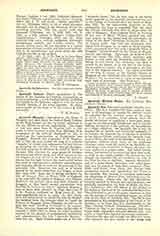

Apostolic Majesty, a title given to the Kings of Hungary, and used, since the time of Maria Theresa, by the King himself, as also in letters addressed to him by officials or private individuals. The origin of this title dates from St. Stephen, who is supposed to have received it from Pope Sylvester II in recognition of the activity displayed by him in promoting the introduction of Christianity into Hungary. Hartvik, the biographer of St. Stephen, tells us that the pope hailed the king as a veritable “Apostle” of Christ, with reference to his holy labors in spreading the Catholic Faith through Hungary. The bull, however, of Sylvester II, dated March 27 of the year 1000, whereby the pope grants St. Stephen the crown and title of King, and which returns to him the kingdom he had offered to the Holy See and confers on him the right to have the cross carried before him, with an administrative authority over bishoprics and churches, affords no basis for the granting of this particular title. Moreover, the bull, as is clearly proved by the latest researches, is a forgery of later date than 1574. Pope Leo X having conferred the title of Defensor Fidei on Henry VIII of England, in the year 1521, the nobles of Hungary, with Stephen Werboczi, the learned jurist and later Palatine of Hungary, at their head, opened negotiations with the Holy See to have the title of “Apostolic Majesty”, said to have been granted by Pope Sylvester II to St. Stephen, conferred on King Louis II. But these negotiations led to no result. In 1627, Ferdinand III endeavored to obtain the title for himself, but desisted from the attempt when he found the Primate of Hungary, Peter Pazmany, as well as the Holy See itself, unwilling to accede to his request. When however measures were taken, in the reign of Leopold I (1657-1705) to make the royal authority supreme in the domain of ecclesiastical jurisdiction and administration, the title “Apostolic Majesty” came into use. Maria Theresa makes use of the title “Apostolic Queen” for the first time in the letters patent granted to the imperial plenipotentiary sent to the College of Cardinals after the death of Benedict XIV. In the instructions imparted to this ambassador the hope is expressed that the Holy See will not withhold this title in future from the ruler of Hungary. Pope Clement XIII, on learning of this wish of Maria Theresa, granted this title motu praprio to the Queen and her successors, by virtue of the Brief “Carissima in Christo filia”, of August 19, 1758. The title was thereupon associated with Hungary by an edict of Maria Theresa, which prescribed that the title “Apostolic King of Hungary” should be used for the future in all acts, records, and writings. Since then the King of Hungary has borne this title, which, however, only accrues to him after his coronation, and does not belong to him before that ceremony, nor does it extend to the Queen, or to the heir to the throne, the so-called rex junior, who is crowned in the lifetime of the reigning monarch. The rights exercised by the king in respect of the Catholic Church in Hungary are not connected with the title “Apostolic Majesty”, but are exercised in virtue of the supreme royal right of patronage. (See Hungary.)
A. ALDASY

